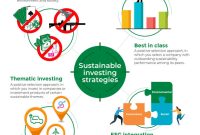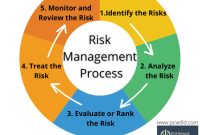Retirement planning is a difficult undertaking and requires a thorough understanding of the available options. From retirement accounts to social security, figuring out which savings options will provide the best secure retirement can be expensive and overwhelming.
It is critical to educate oneself on available retirement savings options and select the one most suited for their individual needs. This article will cover the different types of retirement savings plans, the tax implications, and impacts of inflation.
Understanding The Rules and Regulations on Retirement Savings
Retirement savings are a critical part of most people’s financial plans. Knowing the rules and regulations around retirement savings options can help you make the most of your retirement savings and avoid costly penalties. To help unravel the complexities of retirement savings options, here is an overview of the rules and regulations.
Contributions
First, individuals need to know that there are limits on their allowable contributions to retirement savings accounts. For example, for the 2019 tax year, the contribution limit for a Traditional IRA is $6,000. Contributions to 401(k) plans also have limits, and many employers match employee contributions up to a certain amount. If you contribute more than the allowed limit, you may face tax penalties, so be sure to stay within the limits.
Types of Retirement Accounts
Additionally, there are several types of retirement accounts available to individuals. These include Traditional IRAs, Roth IRAs, 401(k) plans, 403(b) plans, SEP IRAs, and SIMPLE IRAs. Each account has different rules with regards to contributions, tax deductions, withdrawal penalties, and asset protection. It pays to understand which account would best fit your particular retirement needs.
Rollovers and Choice of Investment
If you are changing jobs or retiring, you may qualify for a rollover of your retirement funds into a new account or plan. Additionally, when you open a retirement account, you typically have a choice of investment options including stocks, bonds, mutual funds, and other investment vehicles. Depending on the type of account you choose, you may need to evaluate various investment options to determine which ones are best for your retirement goals.
Tax Considerations
Finally, you should be aware that the tax treatment of retirement savings accounts varies, and you may be subject to different taxes depending on the type of account you have. For example, Traditional IRAs and 401(k)s are subject to taxation when funds are withdrawn, while Roth IRAs are tax-free at withdrawal. For this reason, it is important to understand the tax implications of your retirement savings so that you can plan accordingly.
Conclusion
Understanding the rules and regulations on retirement savings can help you make informed decisions and maximize your retirement savings. Be sure to stay informed about the limits on contributions and how different types of accounts are taxed. With this information, you can make the most of your retirement investments and plan for a secure future.
Exploring Saving Options Available

Retirement can seem like an intimidating concept, and knowing what financial saving options you have can seem overwhelming.
However, it is important for an individual to educate themselves on the numerous retirement saving options that are available in order to ensure that they reach their goals for retirement. Exploring the available saving options will help you to find a suitable approach that is right for your future.
Common saving options to consider:
The following are a few of the most popular retirement saving options to consider:
- 401(K): Organizations often offer their employees 401(K) plans that are retirement savings plans sponsored by the employer for their employees.
- Roth IRA: IRAs are retirement savings accounts with multiple tax advantages, including being able to make withdrawals any time after the age of 59 ½ without any penalties.
- Traditional IRA: These are tax-deferred savings accounts that offer substantial tax deductions for those who qualify.
- Annuities: Annuities are retirement savings contracts between an investor and an insurance company. Investors can use them to guarantee income after retirement.
- Stock market investments: Investing in stocks can be a great way to build wealth, helping you to prepare for retirement.
It is also worth considering some other, less conventional, options. Adding a portion of your income to a savings account, for example, is effective and simple.
No matter which retirement savings options you consider, it is important to consult with professionals, like financial advisors and tax specialists, to ensure that the options are suitable for your individual needs. Educating yourself and having the support of financial experts will enable you to plan prudently for your retirement.
Maximizing Your Retirement Savings
Retirement savings can be complicated, especially when you are starting out. With so many different investing options and platforms on the market, it can be daunting to figure out what fits your needs the best. A savvy investor is important to develop to better maximize their retirement savings. Below are key principles to keep in mind when creating and managing your retirement savings so you can get the most out of them, and ensure you hit your retirement goal.
Start Now
Don’t wait to begin investing. Start socking away for your retirement today. The sooner you begin, the more time your money has to grow and compound. If you wait to start investing, you won’t get as much out of your retirement plan, and may struggle to cover your costs when the time comes.
Make Savings Automatic
The best way to maximize retirement savings is to set up automatic contributions. If your employer offers a retirement plan, contributing regularly is an easy way to stay on track with your retirement savings. You can also set up automatic contributions to an IRA, which can help you develop the savings habit.
Diversify
To get the most out of your retirement savings, you need to diversify. Diversification means spreading your investments into a variety of stocks, bonds, and cash reserves. A diversified portfolio can help you minimize your risks and increase your returns.
Re-Balance When Necessary
If your portfolio is not well-balanced, you may be missing out on the gains of certain investments. Monitor your retirement plan and re-balance your portfolio when necessary. Keeping a diversified account can help protect your retirement savings in case of market downturns and also create more potential for growth.
Be Risk-Aware
When investing for retirement, you don’t want to be too aggressive with your investments. Higher risk investments may reap larger rewards, but there is also the risk of significant losses. A safe and smart investment strategy is to diversify and play it safe. Understand the risks associated with each investment and create a plan that fits your financial goals.
Be Tax-Aware
Taxes can significantly impact your retirement savings. Be aware of the taxes associated with each investment. Some retirement accounts, such as traditional IRAs, are taxed as regular income when you withdraw money. Others, such as Roth IRAs, are tax-free. Investing for retirement and then not focusing on taxes can have an adverse effect on your retirement savings.
Make the Most of Catch-up Contributions
- If you are over 50 and behind on your retirement savings, look for ways to take advantage of catch-up contributions. Most retirement plans and IRA providers offer increased contribution limits for those over the age of 50.
- You can also look into different types of IRAs, such as the Roth IRA, to help maximize your retirement savings and reap the rewards later in life.
- Be sure to take full advantage of any tax breaks you are eligible for and watch out for places you can save money.
Maximizing your retirement savings takes knowledge and careful planning. Understand the various investing options, and create a plan that suits your financial goals. With dedication and effort, you can achieve your retirement goals and secure your retirement savings.
Conclusion
Retirement saving options can be quite complex. Different people have different needs and goals for their retirement savings, and the best option for one person may not necessarily apply to another. It is important to work with an experienced financial advisor to identify the best retirement saving plan to meet both short-term goals and long-term retirement objectives.
Also, it is not enough to set up a retirement plan; it is crucial to ensure that the portfolio is properly managed and adjusted to ensure long-term growth. Proper management and monitoring of retirement portfolios can not only help investors save for retirement, but also grow their money in a sustainable and tax-efficient manner.




